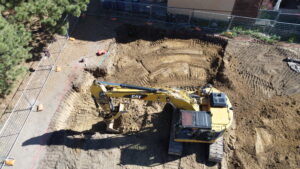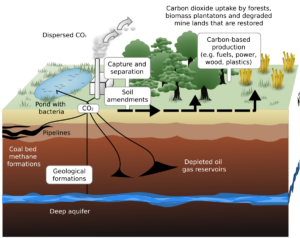
A great benefit to have a PV system in Colorado is net-metering. Since most modern meters can accurately record electricity flows in both directions the utility company can keep track of a homeowners usage from the grid and the power provided to the grid from the array. According to Senate Bill 51 in Colorado any customer that produces more power in a given month than they use in that month will see a kWh credit to their bill. If, at the end of a 12-month period the homeowner has accrued more credits than they have used the utility company must reimburse the homeowner for the excess power. Certain users can choose to carry those credit forward in perpetuity in lieu of the payment.
In this kind of set up each panel in the the PV system will be attached to an inverter and from there the array is connected to a bi-directional meter and then to the house wiring. This way when the PV array is producing more power than is being used it sends that power out to the grid and the meter essentially runs backward. When the home is using power from the grid the meter runs in the normal manner and tracks that usage well.
There are more and more ways you can get a PV system on your house. The two most common ways are to by the system outright and have it installed. Another method that is gaining popularity to lease the system from solar company. These leases typically last for 15 years. The decision is different for most groups.
With access to the right incentives that reduce out-of-pockets costs and provide tax incentives a purchased system can have a pay back period on only 5-7 years. A lease means you will be locked into paying for at least 15 years. But they also tend to do repairs and replace any panels or components as needed.
As always, this is all somewhat general information. Your situation may vary so always do your research!










